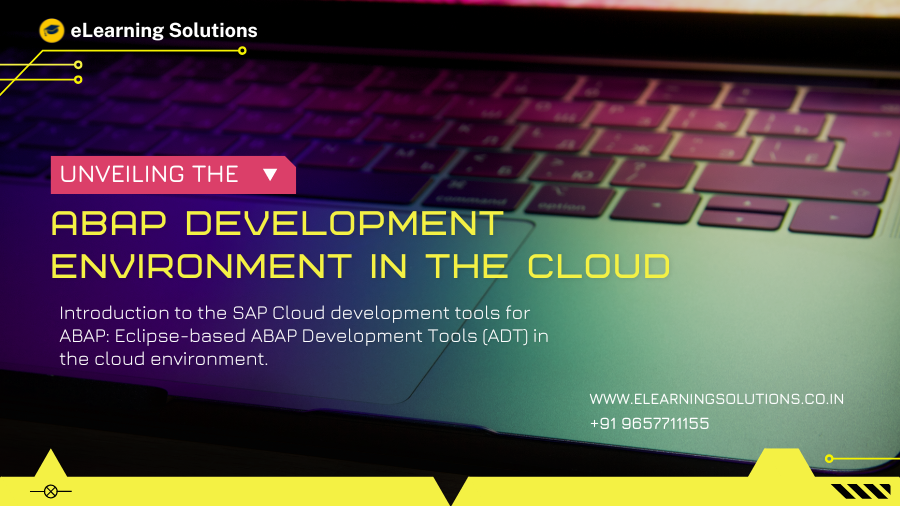In our previous blog, we explored the concept of ABAP on Cloud and its numerous advantages for modern application development. Now, let’s delve deeper into the heart of the matter: the ABAP development environment in the cloud.
Unleashing the Power of Cloud-based ABAP Development Tools
Gone are the days of complex on-premise setups. The cloud offers a streamlined development experience with powerful tools at your disposal:
- Eclipse-based ABAP Development Tools (ADT) in the Cloud: The familiar and versatile ADT workbench is available within the cloud environment. Developers can leverage existing skills and seamlessly transition to cloud development.
- Modern Development Features: Cloud-based ABAP development boasts features like code completion, syntax highlighting, and refactoring capabilities, enhancing developer productivity.
- Version Control with Git: Embrace industry-standard version control with Git for code collaboration, tracking changes, and easy rollbacks.
- Continuous Integration/Delivery (CI/CD) Pipelines: Automate the build, test, and deployment process with CI/CD pipelines, ensuring faster delivery cycles and fewer errors.
Cloud-Based Code Editing and Debugging
The cloud environment empowers developers with robust code editing and debugging functionalities:
- Cloud-Based Code Editor: Access your code from anywhere with a web browser, eliminating the need for local installations.
- Real-Time Collaboration: Collaborate on code in real-time with fellow developers, fostering efficient teamwork.
- Remote Debugging: Debug applications deployed on the cloud server directly from your development environment, streamlining the troubleshooting process.
Integrating with Cloud-Native Services
ABAP on Cloud isn’t an isolated island. It seamlessly integrates with a vast array of cloud-native services, allowing you to build feature-rich and scalable applications:
- Cloud Databases: Leverage powerful database services like SAP HANA Cloud for high-performance data storage and retrieval.
- Messaging Queues: Utilize message queues like SAP Cloud Platform message queues to ensure asynchronous communication between different application components.
- Cloud APIs: Integrate with various cloud APIs (Application Programming Interfaces) to access functionalities from third-party cloud services.
Conclusion
The ABAP development environment in the cloud offers a compelling proposition for developers and businesses alike. It provides a familiar and robust development experience with the added benefits of scalability, agility, and collaboration.
By leveraging cloud-based tools, DevOps practices, and native cloud services, ABAP developers can create innovative and future-proof applications that empower their organizations.
Ready to embark on your ABAP on Cloud journey? Stay tuned for our next blog where we’ll explore the resources available to get you started!



 WhatsApp us
WhatsApp us